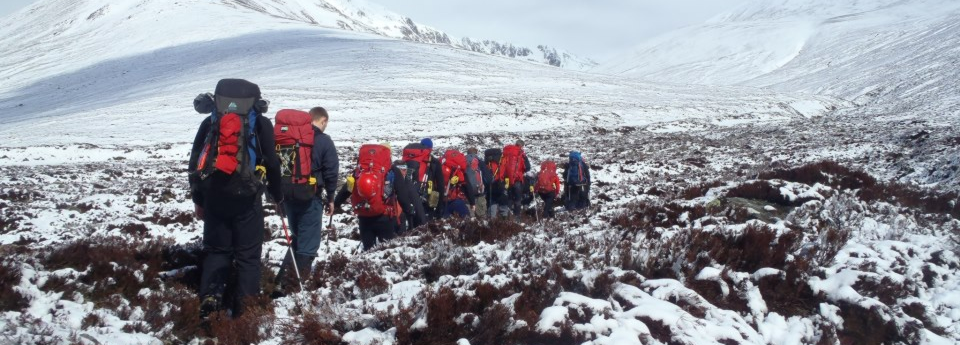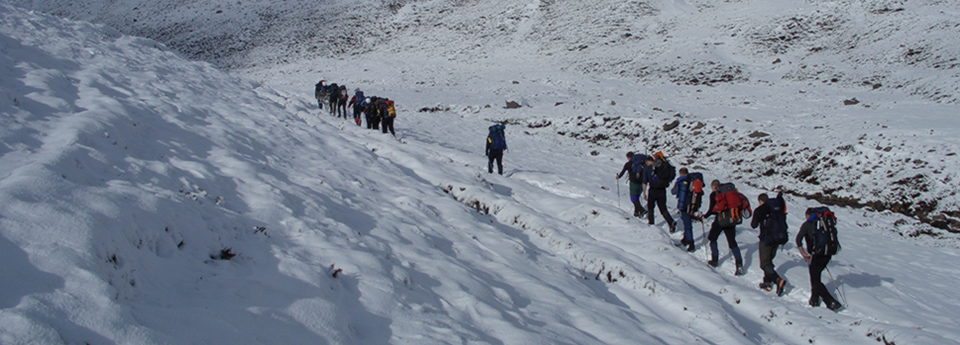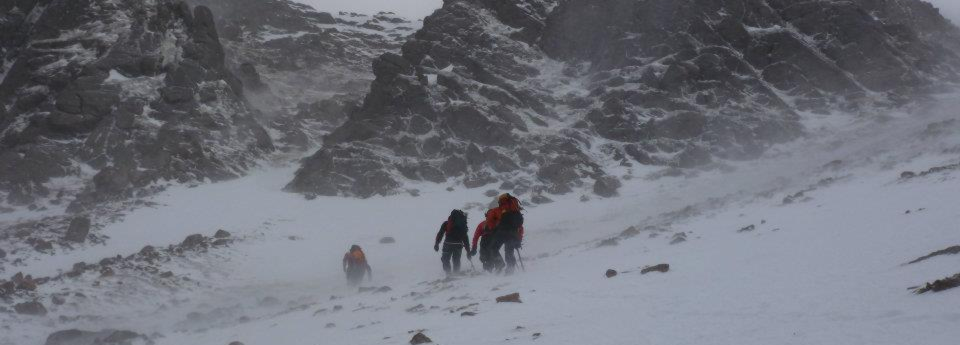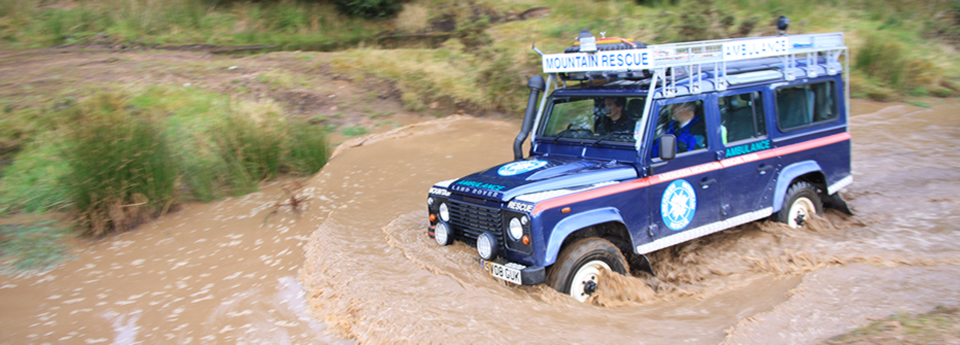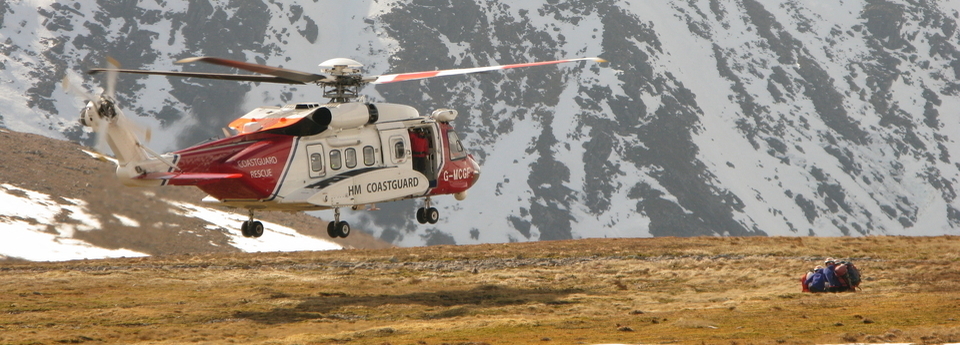Team Leaders' Report 2008
Introduction
In searching for inspiration for this year’s report I was reminded of what has perhaps become one of the most frequently quoted pieces of mountaineering literature.
“There have been joys too great to be described in words, and there have been griefs upon which I have not dared to dwell; and with these in mind I say: Climb if you will, but remember that courage and strength are nought without prudence, and that a momentary negligence may destroy the happiness of a lifetime. Do nothing in haste; look well to each step; and from the beginning think what may be the end.”
Edward Whymper, Scrambles Amongst the Alps 1871
Whymper’s thoughts on the subject of climbing and mountaineering and the associated risks are of course as relevant today as they were when he penned them in 1871, and as a Rescue Team we often find ourselves in the position of having to pick up the pieces that result from a lack of “prudence” or a “momentary negligence”. Nevertheless as mountain rescuers we are firstly and fore mostly mountaineers, and we are acutely aware that adventure in the hills and mountains can result in injury and even death; this is after all part of the challenge and risk of mountaineering and for many it is an important and significant part of the attraction. As a rescue Team we endeavour to support and help the hill going community through the provision of a well trained, experienced and effective rescue organisation. I think however that it is important to remember that as the Team heads towards fifty years of service, it is that sense of a collective purpose and interest in the mountains and hills which drives our enthusiasm and dedication. Indeed I would argue that it is not possible to maintain the necessary enthusiasm for mountain rescue without having an even greater enthusiasm for the mountains.
So what of 2008……….
The winter of 2007/2008 certainly appeared to hold more promise than previous winters, in that forecasts suggested early snow for the Cairngorms; unfortunately, as with previous winters the reality proved to be quite different. The snow came quite late and the early part of the winter was not encouraging in terms of conditions conducive to climbing, walking and ski touring. Having said this, conditions in early Spring were generally quite good, with substantial snow fall and some very good climbing conditions in late February and early March. However, the most significant factor in terms of mountain weather in the Cairngorms in 2008 was the universally appalling summer – wet and windy with very few days when the temperature actually made it into double figures. Somewhat surprisingly this did not result in a significant increase in callouts during the summer – I suspect that many people simply curtailed their hill going activities accordingly.
It is a truism in mountain rescue that you can never be quite sure what the next callout is going to look like. In the course of 2008 we were involved in a number of incidents ranging from the mundane to the highly unusual. One of the more high profile incidents involved a protracted search for a light aircraft, which went missing in the Cairngorms in early April. The late snowfall and generally unsettled weather around Easter turned out to be a significant factor in this incident. Sixty mile an hour winds, near total white out and difficult snow conditions put significant demands on Team members, and resulted in some of the most challenging weather conditions encountered on a callout for some time.
The uncertainty over the possible location of the aircraft crash site resulted in an initial search covering much of the central Cairngorms – a challenging exercise in its own right. Teams were deployed from both sides of the Cairngorms and at one point almost one hundred and fifty mountain rescue team members were involved. The Aberdeen Team was one of the first Teams involved in the search and having been treated to an “interesting” and somewhat memorable flight into our search area courtesy of the RAF, we immediately had difficulty in establishing an effective search pattern due to the poor visibility and the fact that we were walking into gale force winds with horizontal spindrift – at one point our line search had to be stopped when we lost contact with each other despite the fact that we were only about ten feet apart. Extreme conditions like this make the job of searching difficult but they also serve to remind us of the importance of training, and the need to develop the skills and experience that allow us to operate in these challenging conditions.
The wreckage of the aircraft was eventually found the following day by members of Cairngorm Mountain Rescue Team. The aircraft had in fact crashed quite close to the summit of Cairngorm itself; however, the extreme weather conditions had made it very difficult to pinpoint the crash site, hence the need for what turned into one of the most extensive search operations carried out in the Cairngorms for a number of years.
In the course of each year members of the Team are often asked to talk to hillwalking clubs and groups about mountain safety. This is an important part of what we do as a Team and not only does it help to raise the Team’s profile within our area of operations, but it also serves to provide valuable insights for walkers into the potential hazards involved in going to the mountains. One of the key features of these talks is to highlight the fact that mountaineering and hillwalking do, as Whymper so rightly pointed out, carry an element of risk. In our increasingly “risk averse” society it is important that we encourage people to challenge themselves, but to do so in a way which allows them to control the risks and to enjoy the “buzz” that comes from being out there and facing the elements. Mountain safety education has always been an important part of the Team’s approach, and I have little doubt that our efforts in raising awareness of the potential hazards and how to deal with them has been important in reducing mountain accidents.
Training and Equipment
As always training was a major feature of the Team’s activities in 2008 – the need to ensure a high quality and professional approach to the job of mountain rescue requires a significant level of commitment from Team members in terms of training. The training regime used by the Team aims to provide Team members with opportunities to develop and extend their general mountaineering skills, while at the same time ensuring that the highly specialist skills of mountain rescue are adequately covered. Throughout most of the Team’s history the training format that has been used is based on regular weekend training, centred at one of our two bases in the Cairngorms; in addition to this we also have weekly Thursday evening training sessions.
The weekend training sessions provide a mixture of technical mountain rescue specific training combined with opportunities for Team members to pursue and develop their own mountaineering interests and skills. These weekend sessions also provide scope for Team members to extend their knowledge of our “patch”, something which is vital in ensuring that we can efficiently and effectively undertake our rescue role.
In 2008 several members of the Team successfully completed a new Casualty Care course specifically designed for members of rescue teams. First aid is a vital skill for rescuers and all members of the Team undertake first aid training, however, it is generally acknowledged that first aid in a mountain environment requires specialist skills and techniques, and the new Casualty Care course is in part designed to make sure that these are covered. In November all members of the Team renewed their standard first aid certificates, and in the course of the next twelve months we would hope to have more Team members undertaking the new Casualty Care course.
During 2008 we also saw a number of Team members undertake courses on avalanche awareness and rescue skills. These technical courses provide valuable training for rescue Team members and help to update skills and thinking. They do of course, also provide an opportunity for Team members from across Scotland to share their experience and expertise, and perhaps as importantly to make contacts and build relationships between teams.
Equipment
In 2008 we replaced one of our Landrovers; the team has generally always favoured Landrovers in that they provide us with a good balance when it comes to transporting Team members from our Base at Elrick out to our forward bases at Derry and the Spittal of Muick, while at the same time giving us the off-road capability sometimes needed to get Team members into some of the more remote corners of the Cairngorms. Driving rescue team vehicles, particularly off road, can be challenging, and in the course of 2008 several Team members undertook specific “off road” driver training. Not only does this sort of training help to develop skills but it also provides those tasked with driving our vehicles a better insight into the capabilities of the vehicles, and of course it helps to improve all round safety for Team members.
Partly as a result of difficulties with our radio communications during the light aircraft incident in April we decided to invest in a satellite phone. Although our radios generally provide reasonable line of sight cover, there are many places in the mountains where it is almost impossible to receive or transmit a radio signal. This has potentially serious implications when it comes to redirecting team members during a search operation, or when simply trying to ensure that important information is relayed to the relevant people. It is likely that in the course of next year that we will purchase at least one other satellite phone to further improve our general communications.
The need to regularly replace equipment is a major issue for all rescue teams; normal wear and tear requires that we constantly have to replace essentials such as waterproofs, ropes and first aid equipment. Over the last few years we have seen a significant increase in the cost of these items and this places a major financial burden on the Team. Although we do now receive some financial support from the Scottish Government it does not cover our annual running costs, and the viability of the Team continues to depend very largely on our own fund raising efforts and those of our parent Association.
Recruitment
The Team currently has thirty members, with four team members having served in excess of twenty years with the organisation. As a Team we are extremely fortunate in that we have a considerable depth of experience and expertise within our ranks and this, combined with the enthusiasm and commitment of Team members, gives us as an organisation with considerable capability when dealing with all types of search and rescue scenarios. Maintaining that “strength in depth” is an important factor in ensuring the Team’s operational effectiveness, however, none of us are getting any younger and there is an urgent need to recruit new members into the Team.
Recruiting new Team members has however always proved something of a difficult task – this is in part due to the level of commitment we ask for, and the fact that it seems to be increasingly the case that people have busy lives with little time or inclination for volunteering. This problem seems to be one faced by virtually all rescue teams at the moment and has been the subject of much discussion both within and between rescue teams. So if you are reading this and you think that mountain rescue is something that you might be interested in, then please do not hesitate to get in touch with us – you never know it might be a life changing decision!
And Finally…….
I believe that being a member of the Team brings many benefits to the individuals involved, not least of which is the friendships and camaraderie that is such a vital part of making the Team work. The commitment and dedication displayed by members of the Team is outstanding, and I would like to take this opportunity to thank them for the unselfish way in which they give freely of their time and effort. I would also like to say a special thanks to those people, be they family or friends, who provide the behind the scenes support for Team members – we are all very conscious that without your support and tolerance, maintaining our involvement in mountain rescue would be extremely difficult.
Over the years the Team has benefited from a close relationship with the Order of St John and our own Aberdeen and St John Mountain Rescue Association. These two bodies, more than any other, have provided the financial support necessary to allow the Team to function and develop and for that we are extremely grateful.
The Team’s most important asset however is its members, and through their enthusiasm and dedication I am sure that in the year ahead Aberdeen Mountain Rescue Team will continue to provide a life saving service for all those who look to the hills for adventure, fun and inspiration.
Mario Di Maio
Team Leader
